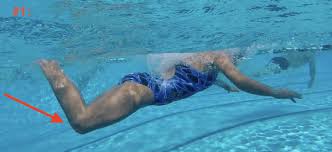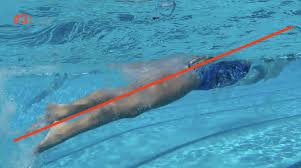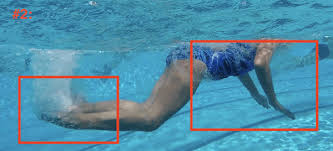Welcome to Part II of our VLOG series on the Butterfly stroke. Last week, we discussed and analyzed flying forward in the pool and not diving down. This week, we will dive deeper into the Butterfly kick and discuss why constantly kicking in fly is key and WHY your second dolphin kick is more important than the first kick!
In case you missed Part I–[CLICK HERE]!
If not, let’s get started…
Butterfly and Breaststroke are leg-driven strokes. Up to 80% of the propulsion generated in Butterfly & Breaststroke can be created from the waist down. With that being said, paying attention to a swimmer’s kick timing and tempo is crucial for a successful Butterfly (and Breaststroke) stroke.
Think of the dolphin kick in fly, as the metronome. The faster your legs kick—the faster your arms move. The moment your legs stop kicking—the stroke falls apart.
With each stroke in fly, swimmers get a dolphin kick at the top (when the hands enter the water, after they finish the recovery) and a second dolphin kick as the hands finish their pull—passing by their bellybuttons. It is the presence and intensity of the second kick that allows a swimmer to finish with a strong pull and have a “relaxed” recovery.
In order to successfully implement a second dolphin kick, a swimmer must do 3 things:
1.) They Must Bend Their Knees:

If a swimmer does not bend their knees, there is no way their legs are in position to execute a second dolphin kick.
Each swimmer must actively bring the heels back up towards their bum (through the up-kick) to have the ability to snap their feet through (the down-kick). In most single kick Butterflyers (myself included), it requires deliberate practice of bending their knees, so they have the ability to snap through (the down-kick).
2.) They Do NOT Stop Kicking.

From the moment they finish their first kick, the swimmer initiates their up-kick (by bending their knees) to ensure the execution of a second dolphin kick.
After the second kick, a swimmer bends their knees to set back up for the first kick. This constant movement of the legs is what makes the kick a Butterflyer’s metronome AND why the lower body is responsible for the majority of the propulsion (the arms go through distinct phases of propulsion and recovery, while the legs never stop generating propulsion).
3.) Their Second Dolphin Kick Must Happen In-Sync with the End of Their Pull.

Making sure the second dolphin kick happens in correlation with the end of a swimmer’s pull is crucial for the stroke’s fluidity and timing.
The second dolphin kick is the only kick that happens while the upper body is being raised out of the water. That means, it is harder to coordinate a second dolphin kick (versus the first kick) because you don’t have the upper body working with you (it is actually working against you).
Therefore, it is very important that you initiate your second dolphin kick as you are finishing your pull, because it will help get your arms above the water (through the recovery) and couple together those two propulsive movements (the down-kick with the finish of the pull) to get the upper body high enough out of the water—for the breath.
Without these movements happening in-sync with one another, a swimmer will have to “muscle” through their recovery and in turn–will get a shorter breath.
How can I identify if my swimmer’s are doing those 3 concepts correctly?
Watch my analysis of the second kick below!
Overall, the second dolphin kick is critical for a successfully Butterfly stroke. Starting your kids early with the thought of “constant kicking” (or the legs never stopping in fly) will help eliminate any pauses within the arms cycle, get your kids arms over the water–more relaxed through recovery, and generate more speed/power within each of their strokes!
[CLICK HERE] for Part III, as we continue dissect the Butterfly stroke by breaking down the pull pattern, overall stroke timing, breathing, and more!
Until Next Time,
Abbie Fish

5 Responses